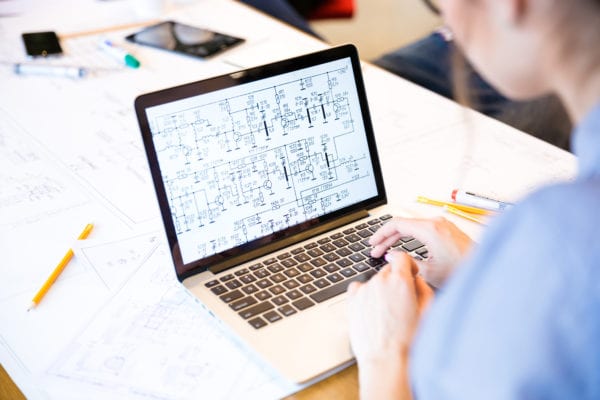
Are you currently using a computerized maintenance management system (CMMS) that technically works, but has some shortcomings? Maybe it doesn’t have all the features you need, it isn’t compatible with mobile devices, or you can’t pull the reports you need. Hanging on to this outdate software maybe be hurting your productivity and performance. Learn how to spot the warning signs that it may be time to replace your CMMS.
8 Signs Its Time to Replace your CMMS
Instead of helping you, your existing CMMS may actually be costing you time and money. Ask yourself the following questions to see if any of the shortcomings found in older maintenance management software may be resolved by implementing a new, modern CMMS.
Is My Current Software Obsolete or Outdated?
If your current CMMS is out of date, you are doing your maintenance team a disservice. Software can become obsolete in many ways:
Perhaps you fell behind on version upgrades and your needs have outgrown the version in use. More research must be done to determine if the newest version will meet your needs and how large the learning curve might be to get everyone up to speed.
In other cases, the original CMMS vendor has closed up shop or abandoned the product, leaving you without the service and support you need. Sometimes, software is simply not supported on newer operating systems—meaning when you switch to a newer operating system, your software may not be compatible with it.
Whatever the case, unsupported software is like a ticking time bomb—you’ll be able to use the software until suddenly, you can’t anymore. Then what will you do without vendor support?
Why Does It Take So Long to Run Reports in My CMMS?
If your CMMS software is outdated, compiling a few simple reports can take a lot longer than it should. (Think hours instead of minutes). When you have several comparisons to make and so much information to analyze, you don’t have time to wait that long. Reporting features may also be lacking due to the age of the system, as more modern reporting tools have more robust capabilities.
Does My CMMS Help with Compliance Tracking?
Regulatory compliance is especially important in highly regulated industries that produce consumable goods such as food and beverage and pharmaceuticals. Older CMMS software may not track the data to show compliance with regulations at all; therefore they may not meet this requirement for these industries.
For example, there is often an electronic signature requirement that outdated software does not have the functionality to meet. Safety and health regulations are continually changing, so your CMMS needs to keep up and ensure related data is tracked accurately. If not, something could get overlooked, resulting in failed audits or even fines. Besides that, tracking compliance is important for the safety of your employees and customers.
Why Am I Still Relying on Paperwork with My CMMS?
One of the goals of implementing a CMMS is to reduce paperwork for maintenance teams. If your CMMS doesn’t store all of the data you need, you may have to record additional information on paper. If this is the case, your CMMS either doesn’t have the features you need or it is outdated. When you’re working in two systems, (physical and electronic), data cannot be readily shared between the two, which can affect recordkeeping and reporting.
Why Is My CMMS So Hard To Use?
If CMMS training has taken place and you still find your CMMS system difficult or confusing to use, it could be that the system is not very user friendly. You should be able to deduce what to do next as you complete tasks or enter data in the software. Older software may be more cumbersome to use, which may increase abandonment or failure to properly use the software. In modern software, the interface is typically more intuitive and streamlined, making it easier for users to navigate.
Read More: What Makes CMMS Software Easy to Use?
Is My Work Order Process Improving or Failing?
One of the main goals of using a CMMS is to improve the work order process. If that isn’t happening (or it’s getting worse), the software you’re using may not be right for your organization. In some cases, it can be difficult to enter work order data into the system. There may not be a way to assign work to specific technicians, making it difficult for them to know which jobs are theirs. Finally, lack of mobility (ability to use the software on mobile devices) might make work less efficient.
Am I Getting Enough support from My CMMS Vendor?
It should be easy to reach your vendor via email, phone, or screen sharing sessions to receive the support you need to fully utilize your software. This is important for troubleshooting, ongoing user training, and any questions you may have about your CMMS. Some vendors have long wait times, or they outsource support to people who don’t understand maintenance. Others may charge a high price for their support packages. If your vendor is not readily available or isn’t offering adequate support, it may be time to find one who will.
Can I Use My CMMS on Mobile Devices?
While many modern CMMS systems are fully functional on mobile devices, older, obsolete systems are not mobile-friendly. If you want to access your CMMS from anywhere, you need modern maintenance management software, no matter where the job takes you.
Read Blog Post: Benefits of Mobile Maintenance Software
Ditch Your Unreliable CMMS: Choose FTMaintenance Select Instead
At FasTrak SoftWorks, we understand that switching to new CMMS software takes time. FTMaintenance Select CMMS implementation services to make the transition to your new CMMS an easy one. We’ll make sure your data and processes remain intact in between removing the old software and installing FTMaintenance Select. Contact us today to learn more about how we can help you transition to FTMaintenance Select.